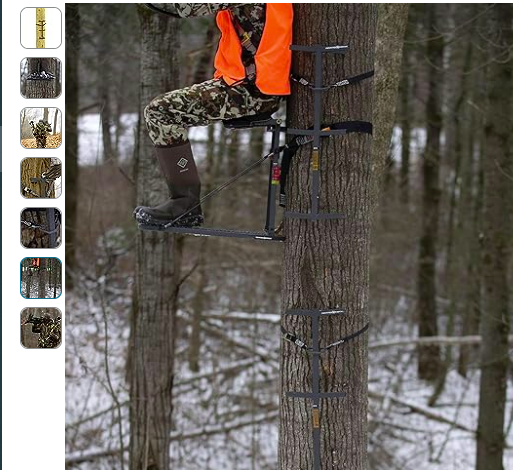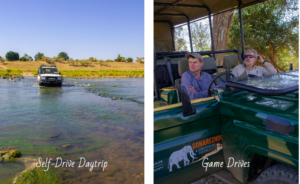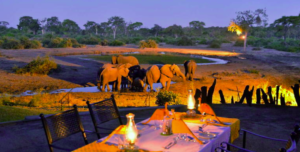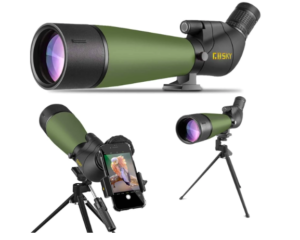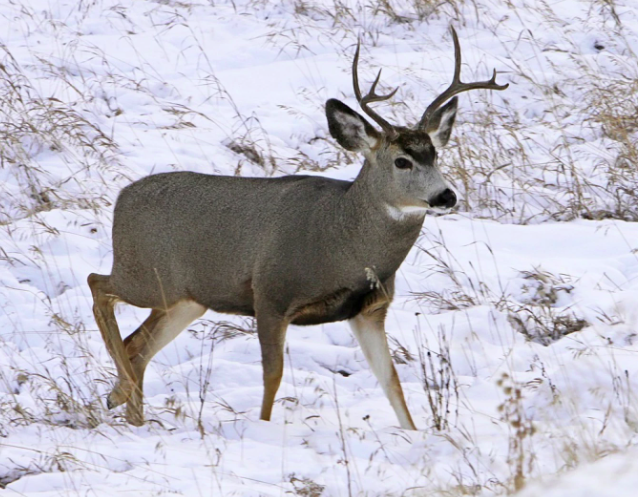
Best State to Hunt Mule Deer
Mule deer hunting is a popular activity among hunting enthusiasts. These deer are known for their large size, impressive antlers, and elusive nature, making them a challenging and rewarding game to hunt. However, not all states are created equal when it comes to mule deer hunting. Some states have better populations, better regulations, and better hunting opportunities than others.
When it comes to finding the best state for mule deer hunting, there are several factors to consider. These include the size and health of the mule deer population, the hunting regulations in the state, and the availability of public land for hunting. Additionally, hunters must consider the ideal hunting seasons, the necessary licenses and regulations, and the essential hunting gear and strategies for success.
Overall, finding the best state for mule deer hunting requires careful research and consideration. By taking the time to evaluate all of the factors involved, hunters can increase their chances of success and enjoy a rewarding hunting experience.
Key Takeaways
- The best state for mule deer hunting depends on several factors, including the size and health of the mule deer population, hunting regulations, and availability of public land.
- Ideal hunting seasons, necessary licenses and regulations, and essential hunting gear and strategies are all important considerations for mule deer hunting.
- Careful research and consideration are necessary to find the best state for mule deer hunting and increase the chances of a successful and rewarding hunting experience.
Understanding Mule Deer Hunting
Mule deer hunting is a popular and exciting activity for many hunters in the United States. These deer are larger than whitetail deer and are found in western North America, from 23 degrees to 60 degrees N. Mule deer hunting is challenging due to their elusive nature and the rugged terrain they inhabit.
When considering the best state for mule deer hunting, several factors should be taken into account. These factors include population density, habitat quality, hunting regulations, and public land access.
Colorado is widely considered the top state for mule deer hunting due to its large mule deer population, sound management practices, and excellent habitat quality. Other states with significant mule deer populations include Wyoming, Montana, Idaho, and New Mexico.
Mule deer hunting requires patience, skill, and knowledge of the animal’s behavior and habitat. Hunters should be prepared to hike through rugged terrain and spend long hours in the field. It’s essential to have the right equipment, including a quality rifle, hunting boots, and clothing suitable for the weather conditions.
To increase the chances of a successful hunt, hunters should scout the area beforehand, looking for signs of mule deer such as tracks, droppings, and rubs. It’s also important to be familiar with the hunting regulations in the state and obtain the necessary licenses and permits.
In summary, mule deer hunting is a challenging and rewarding activity for many hunters. When considering the best state for mule deer hunting, several factors should be taken into account, including population density, habitat quality, hunting regulations, and public land access. Colorado is widely considered the top state for mule deer hunting due to its large mule deer population, sound management practices, and excellent habitat quality.
Best States for Mule Deer Hunting
When it comes to hunting mule deer, some states stand out from the rest. Here are some of the best states for mule deer hunting:
Colorado
Colorado is considered by many to be the best state for mule deer hunting. It has a large population of mule deer, with an estimated 450,000 deer in the state. Colorado also has a solid management plan and plenty of public land for hunting. However, Colorado operates on a limited permit draw system, so hunters need to apply for a permit in advance.
Idaho
Idaho is another great state for mule deer hunting. It has a good population of mule deer, and hunters can buy a mule deer buck tag over the counter. In recent years, a lot of very big bucks have been taken in Idaho. Generally speaking, herds here are doing well and deer numbers are good.
Montana
Montana is famous for its big sky country and offers a unique hunting experience for mule deer enthusiasts. The state’s mix of prairies and mountains is home to healthy mule deer populations. Montana is a great option for hunters looking for a challenging hunt in a beautiful landscape.
Utah
Utah is another state that offers great mule deer hunting opportunities. It has the second-largest population of mule deer in the country, and there are plenty of public lands available for hunting. Utah also has a variety of hunting seasons, so hunters can choose the best time of year for their hunt.
Wyoming
Wyoming is known for its vast open spaces and abundant wildlife, including mule deer. The state has a good population of mule deer, and hunters can find both public and private land to hunt on. Wyoming also offers a variety of hunting seasons, so hunters can plan their trip accordingly.
Overall, these states offer some of the best mule deer hunting opportunities in the country. Hunters should research the specific regulations and hunting seasons for each state before planning their trip.
Factors Affecting Mule Deer Population
Mule deer populations are affected by a variety of factors, including habitat quality, predator populations, hunting pressure, and weather conditions. Understanding these factors can help hunters choose the best state to hunt mule deer.
Habitat Quality
Habitat quality is one of the most important factors affecting mule deer populations. Mule deer require a mix of open grasslands, sagebrush, and forested areas for food, cover, and breeding. Loss of habitat due to development, agriculture, and wildfires can have a significant impact on mule deer populations.
Predator Populations
Predators such as coyotes, wolves, and mountain lions can also have a significant impact on mule deer populations. High predator populations can reduce mule deer numbers by preying on fawns and weak or sick adults.
Hunting Pressure
Hunting pressure is another important factor affecting mule deer populations. Overhunting can reduce mule deer populations, especially if too many does are harvested. However, well-regulated hunting can also help manage mule deer populations and improve habitat quality.
Weather Conditions
Weather conditions can also affect mule deer populations. Severe winters with deep snow can make it difficult for mule deer to find food and can lead to high mortality rates. Drought conditions can also reduce food availability and lead to lower birth rates.
Overall, a combination of these factors affects mule deer populations in different ways in different states. By understanding these factors, hunters can choose the best state to hunt mule deer and help ensure healthy and sustainable populations for future generations.
Ideal Hunting Seasons
When it comes to hunting mule deer, the ideal hunting season depends on the state. Each state has its own hunting season, which is typically determined by the state’s wildlife management agency.
In general, the best time to hunt mule deer is during their mating season, also known as the rut. During this time, bucks are more active and visible as they search for does to mate with. The rut typically occurs in November, but it can vary from state to state.
Here is a table that shows the ideal hunting seasons for mule deer in some of the top states for mule deer hunting:
| State | Ideal Hunting Season |
|---|---|
| Colorado | Late October through mid-November |
| Wyoming | Late October through early November |
| Montana | Late October through early November |
| Idaho | Late October through early November |
| Utah | Late October through early November |
It’s important to note that hunting seasons can vary from year to year and depend on the specific hunting unit within the state. Hunters should always check with their state’s wildlife management agency to confirm the exact dates of the hunting season.
In addition to the ideal hunting season, hunters should also consider the weather and terrain of the state they plan to hunt in. For example, Colorado’s high altitude and rugged terrain can make hunting more challenging, while Montana’s colder temperatures and snow can make hunting more difficult later in the season.
Ultimately, the ideal hunting season for mule deer depends on a variety of factors, including the state, the specific hunting unit, and the hunter’s personal preferences. By doing their research and planning ahead, hunters can increase their chances of a successful hunt.
Licenses and Regulations
Before planning a mule deer hunting trip, it’s important to check the licenses and regulations of the state. Each state has its own set of rules and regulations regarding hunting licenses, tags, bag limits, and hunting seasons.
Some states require hunters to apply for a license or tag through a lottery system, while others offer over-the-counter tags. It’s important to note that some states require hunters to have a guide or to hunt on private land.
Hunters should also be aware of the bag limits in the state they plan to hunt in. Bag limits vary from state to state and can change from year to year based on the population of mule deer in the area.
Additionally, hunters should be familiar with the hunting seasons in the state they plan to hunt in. Hunting seasons can vary by region within a state and can be affected by weather conditions, such as snowfall.
To avoid any legal issues, hunters should make sure to obtain all necessary licenses and tags and follow all regulations set forth by the state. It’s also important to be aware of any changes to regulations or hunting seasons that may occur from year to year.
Overall, hunters should do their research and plan accordingly to ensure a successful and legal mule deer hunting trip.
Essential Hunting Gear
When it comes to mule deer hunting, having the right gear can make all the difference. Here are some essential items to consider bringing on your hunt:
Optics
Good optics are a must-have for mule deer hunting. A quality pair of binoculars will help you spot deer from a distance, while a spotting scope can help you get a closer look at them. Look for optics with high magnification and good light-gathering capabilities, as well as a durable, waterproof design.
Rifle and Ammunition
A reliable rifle is essential for mule deer hunting. Look for a bolt-action rifle chambered in .270 Winchester or .30-06 Springfield, which are both popular choices for mule deer hunting. Make sure to bring enough ammunition for practice and the hunt.
Clothing and Footwear
Mule deer hunting often involves long hours of sitting and waiting, so it’s important to dress in layers to stay warm and comfortable. Look for clothing made from breathable, moisture-wicking materials that can keep you dry and comfortable. Good footwear is also important, as you may be hiking over rough terrain.
Pack
A good hunting pack can help you carry all of your gear and keep it organized. Look for a pack with multiple compartments and pockets, as well as a comfortable, adjustable harness system.
Other Essentials
Other essential gear for mule deer hunting includes a rangefinder, a hunting knife, and a game bag for transporting your meat. Make sure to also bring plenty of water and snacks to keep you fueled throughout the day.
By bringing the right gear on your mule deer hunting trip, you can increase your chances of success and make the experience more enjoyable overall.
Key Hunting Strategies
When hunting for mule deer, there are several key strategies that hunters should keep in mind to increase their chances of success. These strategies include scouting, understanding the terrain, and knowing the behavior of mule deer.
One of the most important strategies for hunting mule deer is scouting. Hunters should spend time in the field before the hunting season begins to scout for areas where mule deer are likely to be found. This can include looking for food sources, water sources, and areas with good cover. By scouting ahead of time, hunters can identify areas where they are likely to find mule deer and can plan their hunting strategy accordingly.
Another important strategy for hunting mule deer is understanding the terrain. Mule deer are found in a variety of different habitats, from mountains to deserts to grasslands. Understanding the terrain where mule deer are likely to be found can help hunters plan their approach and increase their chances of success. For example, in mountainous terrain, hunters may need to be prepared for steep climbs and long shots, while in desert terrain, hunters may need to be prepared for long periods of glassing and stalking.
Best climbing sticks for mule deer hunts
Knowing the behavior of mule deer is also critical for successful hunting. Mule deer are typically most active during the early morning and late afternoon, so hunters should plan their hunts accordingly. Additionally, mule deer are often found in small groups, so hunters should be prepared to stalk quietly and patiently. Finally, mule deer have excellent eyesight and hearing, so hunters should be prepared to use cover and concealment to get within range.
By following these key hunting strategies, hunters can increase their chances of success when hunting for mule deer.
Ethics of Deer Hunting
Deer hunting is a popular activity in many states, but it is important to remember that it comes with ethical responsibilities. Hunters must always prioritize safety and respect for the animal they are hunting.
One ethical consideration is the use of proper hunting equipment. Hunters must ensure that their equipment is in good condition and that they are proficient in its use. This includes firearms, bows, and arrows. Using faulty equipment can lead to unnecessary suffering for the animal, which is not only unethical but also illegal in many states.
Another ethical consideration is the treatment of the animal after it has been killed. Hunters should make every effort to quickly and humanely kill the animal, and then properly field dress it. This includes removing the entrails and cooling the carcass as soon as possible to prevent spoilage. Properly handling the animal ensures that the meat is safe to eat and reduces waste.
Hunters should also be respectful of the environment in which they are hunting. This means following all laws and regulations regarding hunting, as well as practicing Leave No Trace principles. This includes not littering, not disturbing the natural environment, and respecting other hunters and landowners.
Finally, hunters should always be mindful of the impact their hunting activities have on the deer population. Overhunting can lead to a decline in the deer population, which can have negative effects on the ecosystem. Hunters should follow all regulations regarding bag limits and hunting seasons to ensure that the deer population remains healthy.
Overall, ethical deer hunting requires hunters to be knowledgeable, responsible, and respectful. By following these guidelines, hunters can ensure that they are not only following the law, but also contributing to the long-term sustainability of the deer population.
Conclusion
After conducting thorough research, it is clear that Colorado is the best state for mule deer hunting. Its large mule deer population, solid management plan, and ample public land make it a top destination for hunters. Additionally, Colorado’s preference point system allows hunters to build up points for a better chance at obtaining a limited permit.
While other states such as Wyoming, Montana, and Idaho also offer good hunting opportunities, they do not have the same level of mule deer population as Colorado. It is important to note that mule deer hunting regulations and seasons vary by state, so it is crucial for hunters to research and abide by local laws.
Furthermore, hunters should come prepared with the appropriate gear and equipment for their trip, including proper clothing, hunting rifles, and camping supplies. It is also recommended to hire a guide or outfitter for a more successful and enjoyable hunting experience.
Overall, Colorado’s combination of mule deer population, management plan, and public land make it the top choice for hunters seeking a successful mule deer hunting trip.
Frequently Asked Questions
Which states offer over the counter mule deer tags for non-residents?
Over the counter tags are available for non-residents in Colorado, Idaho, Montana, and Wyoming. However, it’s important to note that these tags may be limited in number and may sell out quickly. It’s best to check with each state’s wildlife agency for specific details.
What is the success rate for mule deer hunting in Colorado?
According to the Colorado Parks and Wildlife, the success rate for mule deer hunting in Colorado varies by hunting unit and weapon type. In general, the success rate for rifle hunters is around 40%, while archery and muzzleloader hunters have a lower success rate of around 15-20%. Factors such as weather, hunting pressure, and habitat conditions can also impact success rates.
Where is the best place to hunt mule deer in South Dakota?
The Black Hills region of South Dakota is considered one of the best places to hunt mule deer in the state. The area has a healthy population of mule deer and offers a mix of public and private land hunting opportunities. Other areas to consider in South Dakota include the Badlands and the Missouri River Breaks.
What is the cost of a mule deer tag in Nebraska?
As of 2023, the cost of a mule deer tag in Nebraska is $209 for residents and $1,740 for non-residents. However, non-residents must apply for a tag through a lottery system, and the odds of drawing a tag can be low.
What are the hunting regulations for mule deer in Utah?
Hunting regulations for mule deer in Utah vary by hunting unit and weapon type. In general, hunters must have a valid hunting license and a mule deer permit to hunt mule deer in Utah. The state also has specific rules regarding antler point restrictions, hunting seasons, and bag limits. It’s important to check with the Utah Division of Wildlife Resources for specific regulations.
How can I improve my chances of a successful mule deer hunt?
There are several things hunters can do to improve their chances of a successful mule deer hunt. First, scouting the area ahead of time can help hunters locate areas with high deer populations and identify potential hunting spots. Second, using the right equipment, such as quality optics and scent control products, can also increase the chances of a successful hunt. Finally, hunters should be patient and persistent, as mule deer can be elusive and difficult to hunt.

